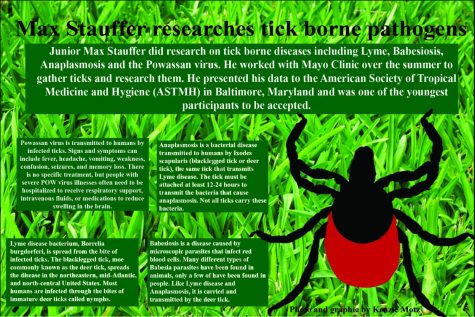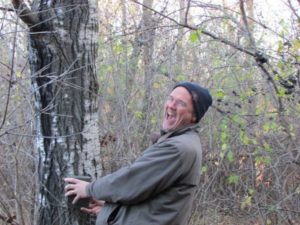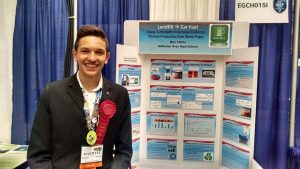Stauffer’s tick research lands him at national conference
March 4, 2018

The snap of his elastic glove meeting his skin interrupted the steady hum of the DNA machine in the corner. His white lab coat, surprisingly unstained by the pipettes of pigment he had been using, hung still as he conducted his research. These were the sights and sounds that surrounded junior Max Stauffer as he began his journey in the science world.
It all started when Stauffer took AP Biology. Immediately, he developed an interest in science, especially labs and experiments.
“I really enjoyed doing the labs and so I figured why not try doing a project focused around biology,” Stauffer said.
Through his father’s position at Mayo Clinic, Stauffer was able to have the opportunity to team up with Mayo’s head parasitologist, Dr. Bobbi Pritt, to conduct research on deer ticks and to live out his passion for biology.
One day over the summer, Pritt and Stauffer set off to her cabin in Hayward, Wisc. to drag for ticks. At the end of the day, they had collected 151 deer ticks, which they then took back to Mayo Clinic to study. At the Mayo lab, they froze the ticks at -20 degrees Celsius and pulverized (crushed) them before extracting their DNA and performing PCR to amplify the DNA. After two full days of genetic DNA testing for specific diseases, they got their results and were shocked.
“In our results we found that one third of the ticks had Lyme disease, which is kind of crazy,” Stauffer said. This means that if a deer tick attaches to a person, it is fairly likely that they will contract Lyme disease.
According to Pritt from Mayo Medical Laboratories, symptoms of Lyme disease include “bulls eye” rashes, flu-like symptoms, nervous system problems and joint pain. She also says that Lyme disease is treatable, but there is no immunity for it, so if someone was bitten again after treatment, they would become infected once more.
After going over their deer tick findings, Pritt and Stauffer submitted their work to the American Society of Tropical Medicine and Hygiene (ASTMH) and were invited to a national conference in Baltimore, Maryland. They graciously accepted the offer and flew out to speak to and to hear from hundreds of other scientists and doctors around the country. At the conference, they presented their work for an hour and a half before returning home to Minnesota.
“I think just going through the scientific process was really helpful-just to be able to be with a real professional and be able to learn from her experiences,” Stauffer said.










Rose Deziel • Mar 11, 2018 at 10:46 pm
The strong lead drew me in and it made me feel like I was in the lab myself. It was packed with interesting information, yet it was short, which kept my attention. Also, the graphic in the alternative copy looks awesome!